The Frank-Schultz family on Duwisib farm generously helped us through a very rough time. Namibia's 85,000 Europeans are mostly Afrikaner (65,000) and German (20,000, including the Frank-Schultz) heritage and are concentrated in urban, central and southern Namibia.
|
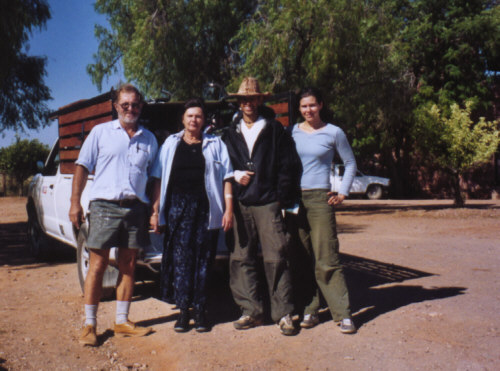
|
|
Although Namibia is one of the world's least densely populated countries, its rich mix of ethnic and tribal backgrounds provides a wealth of social and cultural diversity.
|
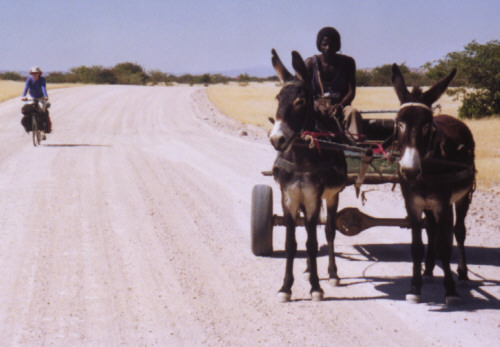
|
|
Estelle Smit, on the Smit farm in northern Namibia took us in for the night. Wilhelm and Estelle treated us like their own children.
|
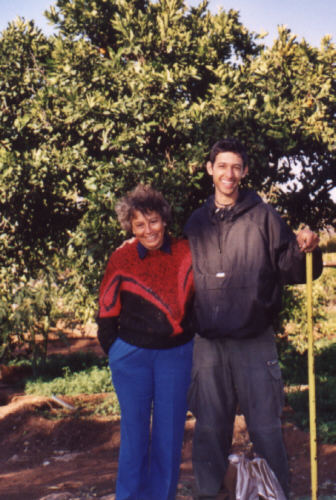
|
|
Namibia's 100,000 Herero, who are mainly herders, occupy several regions of the country and are divided into several subgroups. For most rural Herero people in Namibia, cattle are the most prized possesions (and bicycles a common means of transportation).
|
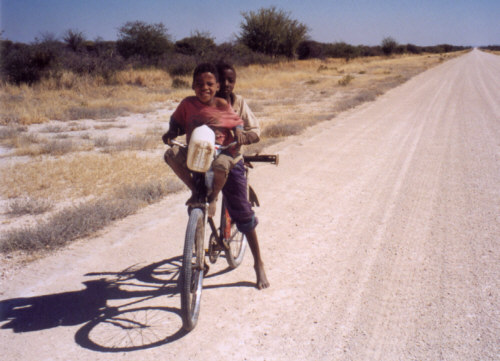
|
|
Most rural Kavango live on the level, wooded flood plains of the north-east, south of the Okavango river, where they make a living from fishing, herding livestock and subsistence farming of millet, maize and sorghum.
|
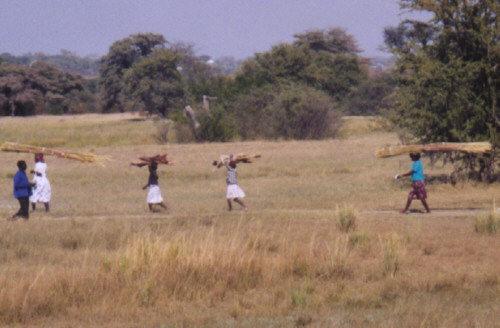
|
|
Botswana has an estimated population of 1.46 million, about 60% of whom claim Tswana heritage. It currently has one of the world's highest birth rates and the average Batswana woman will bear 5 children.
|
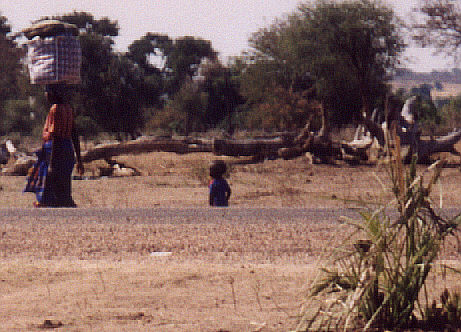
|
|
Botswana is also one the world's most predominantly urban societies. The adoption of Christianity and a European-style central government has resulted in most traditional practices being phased out and rural villages shrinking as people migrate into urban areas in search of vocational and professional jobs.
|
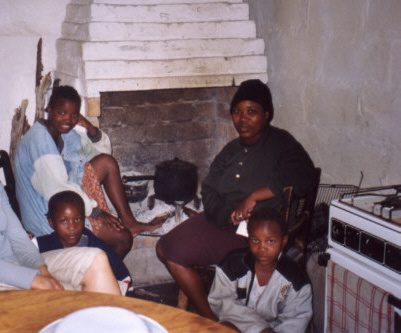
|
|
The government of Zambia officially recognizes 73 different tribes or ethnic groups. Zambia's population is about 10.3 million, with a growth rate of 2.8%. There are about 20 distinct languages, subdivided into 2 or 3 dialects, and some into more than 10.
|
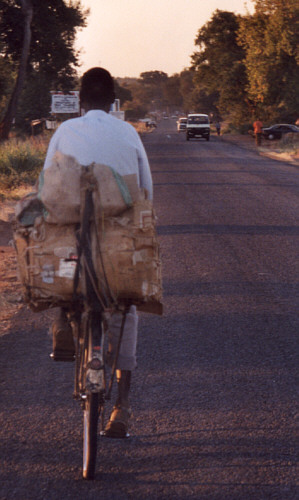
|
|
The Mukanda, also known as circumcision camps, are traditional "schools" for local boys, aged from 12 to 17, where they are introduced to adult life and circumcised. The Makishi dancer (pictured) known as "Chileya cha Mukanda", which literally means "the fool of the school", serves as a jester by mimicking the participants so as to relieve tension and anxiety before the circumcision ceremony.
|
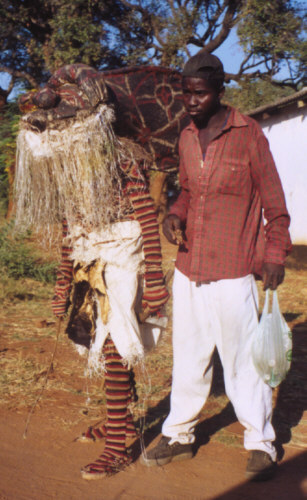
|
|
The friendly Mukendwa family (picture missing wife #1, and a couple of children) in Southern Zambia welcomed us into their warm home, which turned out to be one of the most enriching experience of our entire trip.
|
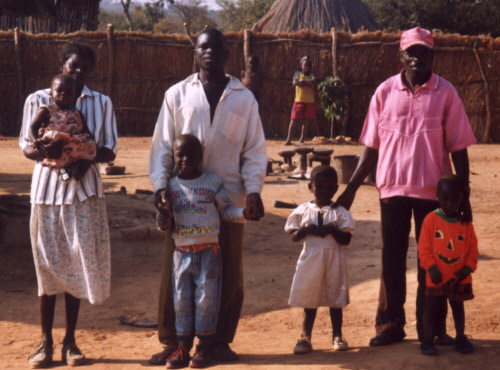
|
|
We encountered the occasional philosopher, who had a lot to say, and a lot of questions for us. As drunk Tom shown here. Although I hate to generalize, Zambia's people were amongst the friendliest and most polite people we have ever met. The Zambezi valley, between Victoria Falls and the Kariba gorge is the homeland of the valley Tonga tribe (a tribe that was oppressed for most of its history).
|
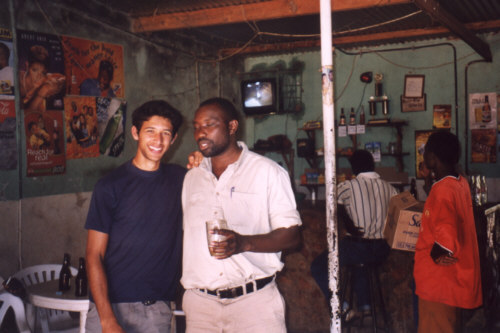
|
|
In the 1950s the Tonga received the toughest blow of all when the creation of Lake Kariba put a big slice of their territory under water. A huge and expensive project called Operation Noah rescued rhinos, lions and other species trapped on islands by the rising waters, and brought them to the mainland - mostly on the Zimbabwean side of the lake. At the same time, the Tonga were virtually forgotten, their land submerged with no-one to rescue them, and nowhere else to go.
|
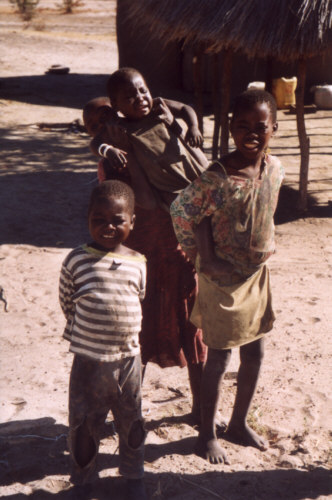
|
|
Some groups were allocated new land, but it was 'spare' precisely because it was no good for farming. Many people were forced to move on, and look for work in the cities. Those who resisted the longest were simply rounded up, loaded into trucks and relocated with nothing (or very little) in the way of compensation. Eventually, a total of about 60,000 Tonga were displaced from their ancestral lands - an issue that remains unresolved today.
|
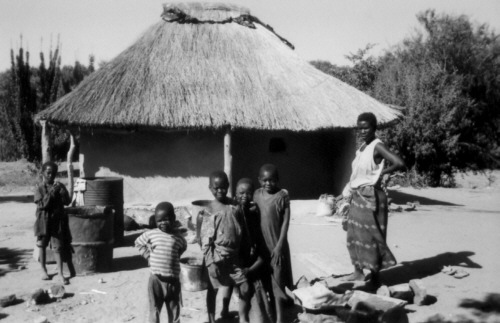
|
|
Central features of traditional culture in Zambia are the family and the tribe. These ties are important because in a society where the state can be relied upon for very little, people look towards their extended family for help in times of need. Likewise, sharing is an important part of the kinship ideal. Everybody in the village was taking part in the building of this hut for example.
|
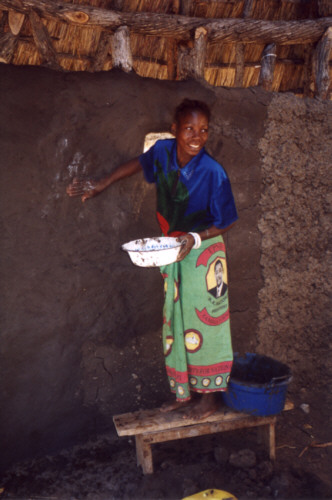
|













